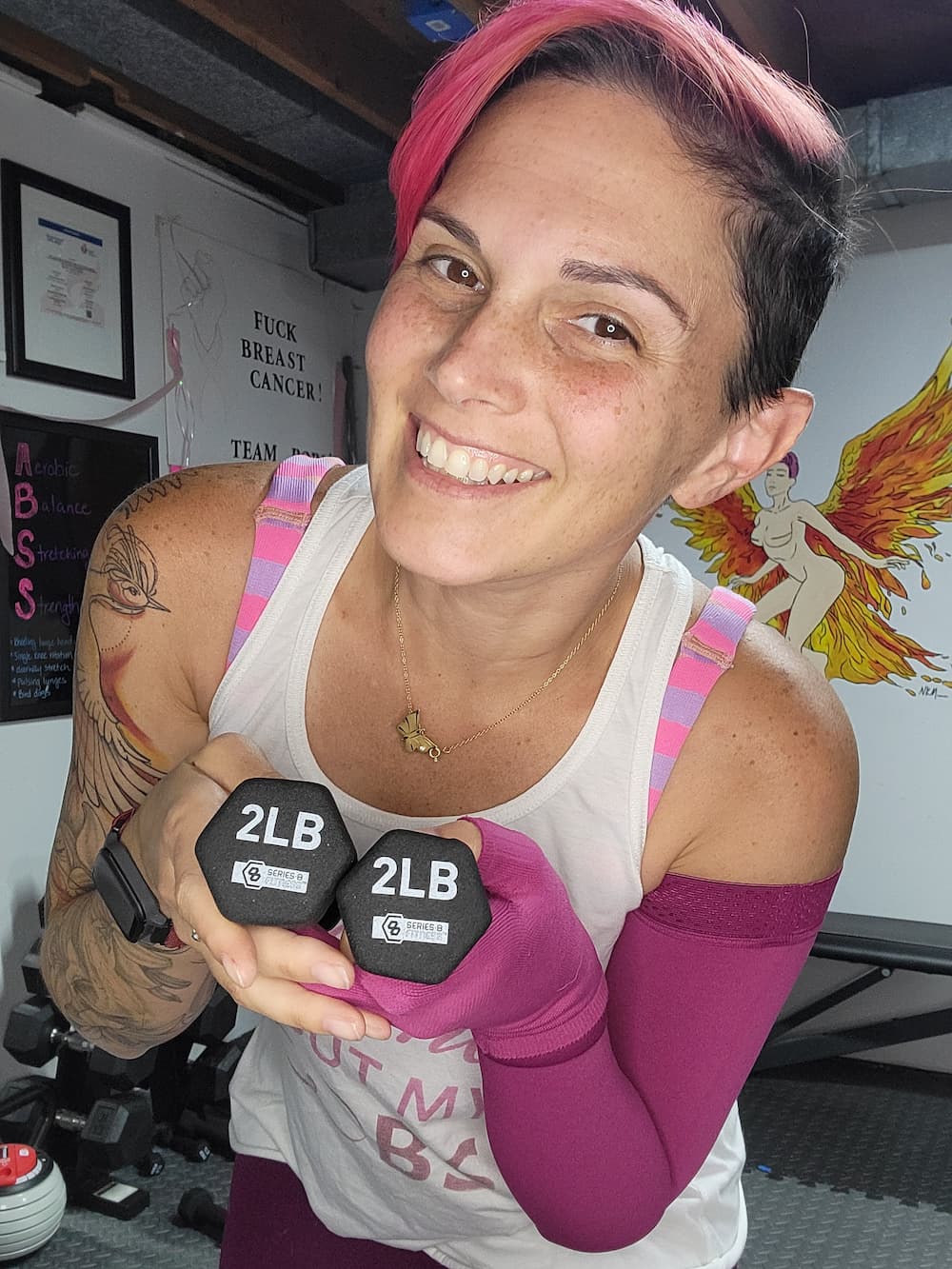Mobility & Breast Cancer treatment
I understand firsthand the challenges that come with navigating treatment-related side effects, including limited mobility. Throughout my own journey, I’ve learned the importance of tailored exercises and gradual progression to regain my range of motion and live a life without constant pain.

Understanding Range of Motion Limitations
Breast cancer treatment, including surgery, radiation, and chemotherapy, can lead to stiffness and reduced mobility in various areas of the body.
Commonly affected regions include the shoulders, chest, and arms.
Surgical procedures like a mastectomy or lumpectomy may result in scar tissue formation and muscle tightness which results in restricting movement.
Additionally, radiation therapy can cause fibrosis and inflammation, further limiting range of motion. These limitations can impact everyday activities such as reaching for something in a cabinet, lifting your kids, and even dressing yourself.
As you can imagine, this significantly affects the quality of life for us breast cancer survivors who are undergoing treatment and well beyond.
Adapted Exercises for Improved Range of Motion
Despite these challenges, incorporating tailored exercises can play a crucial role in improving flexibility and range of motion.
I cannot emphasize how important gentle stretches are for helping to increase your shoulder mobility.
Things like shoulder rolls, wall slides, and pendulum swings are simple ways to help loosen the shoulder girdle (especially after surgery).
Another type of stretch I talk about all the time (literally) is doorframe stretches!
Think about how we spend our day-to-day outside of breast cancer – we’re on the computer probably not with the best posture or looking down at our phones – our chests are begging to be stretched!
My rule of thumb during and far after breast cancer treatment is to open up the front, and strengthen the back. It’s really that simple.
However, it’s essential to customize specific exercises based on individual needs and limitations, ensuring safety and effectiveness.

Importance of Gradual Progression
I cannot overemphasize the significance of gradual progression.
I will literally scream this from the rooftops or until I’m blue in the face – SLOW & STEADY is the name of the game.
When it comes to exercise regimens for individuals undergoing breast cancer treatment, starting with low-impact activities and gradually increasing intensity and duration helps prevent injury and minimizes the risk of exacerbating existing limitations.
Incorporating principles of progressive overload, such as gradually increasing resistance or repetitions, allows for steady improvements in range of motion and overall fitness.
Listening to your body and respecting its signals is key when you’re regaining mobility.
Additionally, don’t forget about our increased risk of lymphedema. Have you checked out my FREE Lymphedema Drainage Program yet?
a comprehensive approach to mobility after breast cancer
Managing limited range of motion in breast cancer treatment requires addressing both physical and emotional aspects.
By understanding the factors contributing to range of motion limitations, implementing adapted exercises, and emphasizing gradual progression, I have full faith that you can reclaim your mobility and enhance your quality of life during and after treatment.
Remember, you’re not alone on this journey, and seeking support from qualified professionals can make a significant difference in your rehabilitation and recovery process. I’m committed to supporting you on this journey!




